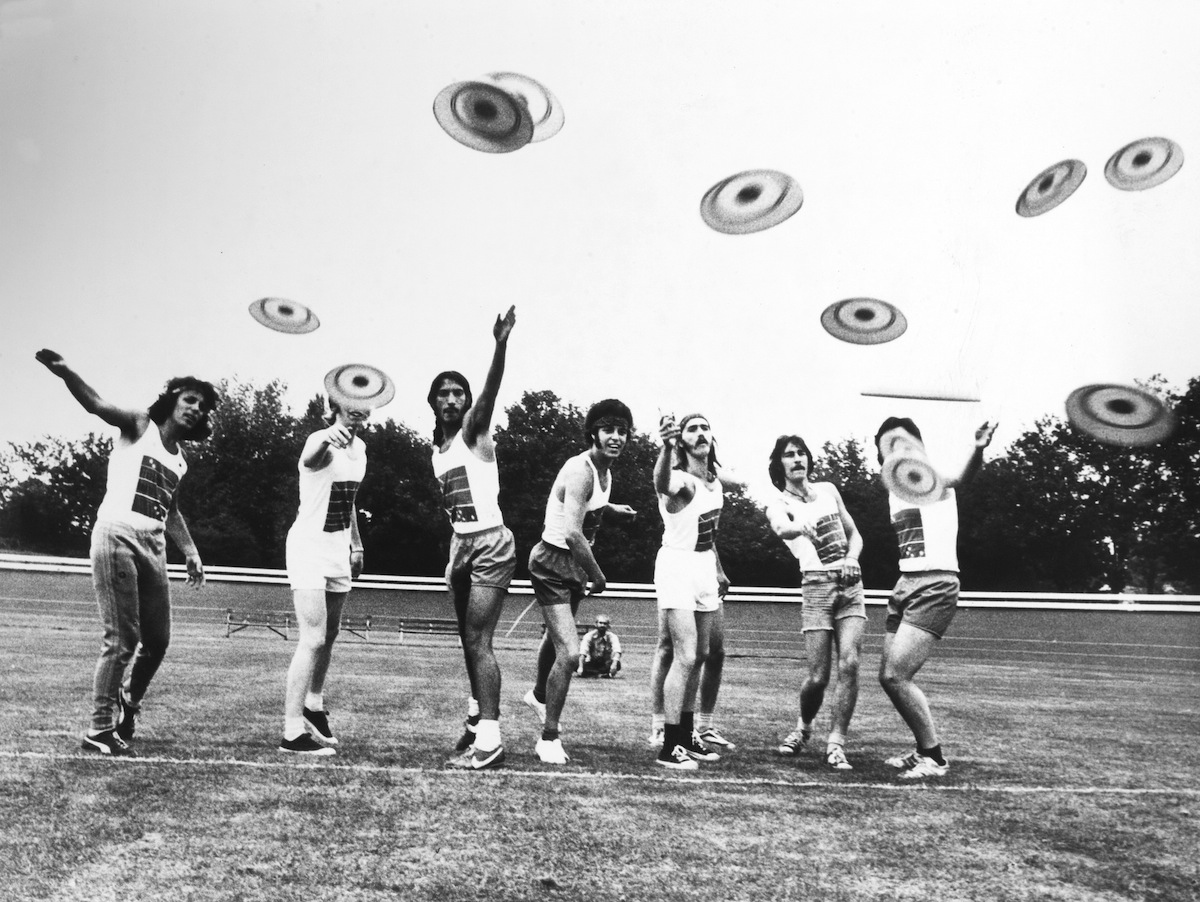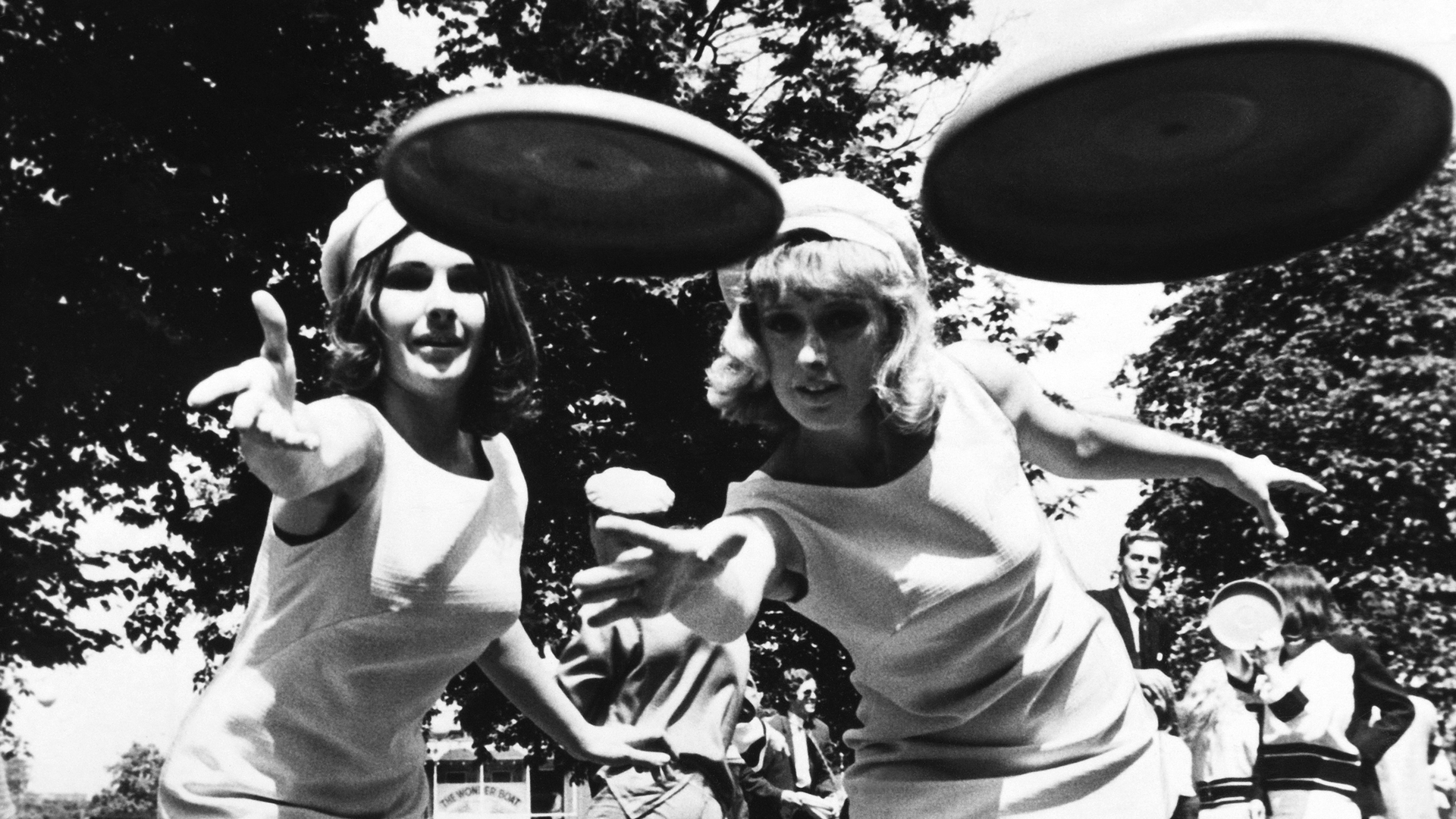The Frisbee was originally called the Pluto Platter. Walter Morrison invented it in 1948.
Disc enthusiasts and outdoor fun seekers often wonder about the origins of the Frisbee, a staple in recreational activities worldwide. This flying disc captured the imagination of people of all ages, transcending its simple design to become a symbol of leisure and sport.
The Pluto Platter, as it was initially named, reflects the mid-20th century fascination with space and the unknown. Invented by Morrison, the name was changed to Frisbee after the Wham-O toy company bought the rights in 1957, supposedly naming it after the Frisbie Pie Company whose pie tins were tossed around by Yale University students. Today, the Frisbee is not only a toy but a centerpiece in various disc sports, including Ultimate and disc golf, demonstrating its enduring appeal and versatility.

Credit: www.marshallstreetdiscgolf.com
Contents
The Birth Of A Flying Disc
The humble beginnings of the Frisbee date back to the early 20th century. It has evolved from a simple idea to the beloved flying disc enjoyed around the world. The journey of the Frisbee is as fascinating as the twists and turns it makes through the air. Let’s delve into the origins of this classic American pastime.
Early Designs And Prototypes
The story of the Frisbee began with crude flying objects made from various materials. Early designs included tin pans, pie plates, and box lids. The idea was simple: find something round, toss it, and watch it fly. These early discs laid the foundation for a new form of play. People of all ages found joy in the simple skill of throwing and catching.
- Tin pans
- Pie plates
- Box lids
Inventor Walter Morrison’s Contribution
In 1948, Walter Morrison took a giant leap in the evolution of the flying disc. He and his partner, Warren Franscioni, developed a more aerodynamic model they called the “Flying Saucer”. With an improved design crafted from plastic, they captured the imagination of a wider audience. Morrison was integral to the Frisbee’s rise in popularity. He eventually redesigned the disc and named it the “Pluto Platter”, leading to the birth of what we now know as the Frisbee.
| Year | Design | Name |
|---|---|---|
| 1948 | Aerodynamic plastic disc | Flying Saucer |
| Late 1940s | Redesigned plastic disc | Pluto Platter |
From Pie Tin To Plaything
An iconic toy, the Frisbee, has a humble beginning. Before soaring through the air at parks and beaches, the original Frisbee was a simple pie tin. Kids and adults today might not realize this flying disc started from a modest kitchen item. This playful transformation is both remarkable and entertaining.
Tossing Pie Tins For Fun
The story of the Frisbee begins in the 1930s. The Frisbie Pie Company, based in Connecticut, made pies that students at nearby colleges loved. After finishing their pies, these students found a new use for the empty pie tins. They would fling them across the college grounds, yelling “Frisbie!” to warn others of the incoming tin. This pastime was simple but captivating. It showed the joy found in basic objects around us.
The College Campus Craze
As the tossing game became popular, the pie tin evolved into a college craze. Students from various campuses embraced this new sport. It wasn’t just about throwing a tin; it required skill and had a hint of competition. The growing fascination led to more students engaging in what would become a legendary game. This craze set the stage for the pie tin’s transformation into the Frisbee we know today.
The Original Name Revealed
Long before it became known as the ultimate toy for fun in the park, the Frisbee had a different label. Let’s dive into its original moniker and discover how this popular flying disc was first introduced to the world.
The ‘pluto Platter’ Takes Flight
In the late 1940s, a toy emerged that would soar into the hearts of millions. It was the Pluto Platter, a name that captured the fascination with space and planets of the time. The Pluto Platter was designed to fly smoothly and gracefully, just like the UFOs that were a staple of science fiction and a growing national curiosity.
- Invention: By Walter Morrison.
- Year: 1948.
- Inspiration: UFO shapes and aerodynamics.
Trademarking And The Shift In Naming
A pivotal moment came when the toy caught the attention of the Wham-O toy company. They saw the potential for this flying wonder. The Pluto Platter’s journey took a new turn with Wham-O’s vision.
- Trademarked: By Wham-O in 1958.
- New Name: “Frisbee” was born.
- Reason: To echo the sound of the disc flying and the fun of playing with it.
The name Frisbee quickly stuck and a cultural icon was born. It became synonymous with play and joy throughout generations. Though the name changed, the delight it brings remains the same.

Credit: time.com
Marketing The Frisbee: A Brand Evolution
The iconic Frisbee didn’t always soar by this name. Its original title bore little resemblance to the catchy moniker we know today. This transformation wasn’t merely cosmetic; it represented a strategic marketing revolution.
Wham-o’s Role In Renaming
Wham-O, a toy company known for fun, rebranded the flying disc in 1957. They christened it “Frisbee,” creating a playful and memorable name. This change was not a random choice. It linked to tales of the Frisbie Pie Company, whose empty tins inspired the disc’s design.
Marketing Strategies And Public Reception
- Wham-O crafted a tale around Frisbee. They turned a simple toy into a must-have.
- Their strategy included demonstrations, competitions, and college campus visits.
- Graphics and catchy slogans adorned the packaging, ensuring it stood out on shelves.
- Customer engagement was high priority; they encouraged outdoor play.
- Public reception was overwhelmingly positive.
- Soon, the Frisbee became a symbol of leisure and fun across America.
Cultural Impact And Legacy
The once humble toy with its simple original name, the “Pluto Platter,” soared beyond its playful beginnings to become an iconic symbol in sports and popular culture. The cultural impact and legacy of the Frisbee reflect a remarkable journey from casual recreation to competitive sports.
Frisbee In Popular Culture
It’s hard to imagine summer picnics or beach outings without the joyous sight of a Frisbee gliding through the air. Music, movies, and television shows have immortalized the Frisbee as a symbol of fun, freedom, and youthful spirit. With its simple design and endless possibilities for play, the Frisbee has left a lasting impression on generations, creating a shared experience that transcends age and geography.
- Festivals and competitions globally celebrate the art of Frisbee tossing.
- Celebrities often spotted engaging in Frisbee play, further boosting its cool factor.
- Innovative games and sports like Ultimate Frisbee have emerged, showcasing the disc’s versatility.
The Sport Of Disc Golf And Frisbee’s Influence
The sport of disc golf stands as a testament to the Frisbee’s profound influence on recreational activities. What began as a simple game with friends has evolved into a globally recognized sport, complete with professional players, specialized equipment, and dedicated courses.
| Aspect | Influence |
|---|---|
| Course Design | Park landscapes transformed into challenging disc golf terrains. |
| Community | Disc golf enthusiasts unite, forming clubs and associations. |
| Professionalism | Rankings, sponsorships, and tournaments elevate the sport. |
Young and old alike cherish the Frisbee’s contribution to sports and leisure. Its enduring presence on college campuses and in diverse communities solidifies the Frisbee’s role as more than just a plaything; it is a cultural staple that continues to inspire and unite people across the world.

Credit: www.history.com
Frequently Asked Questions Of What Was The Frisbee Original Name
Is Frisbee A Real Name?
Yes, Frisbee is a recognized brand name for flying discs, originally trademarked by Wham-O in the 1950s.
Did The Inventor Of The Frisbee Become A Frisbee?
Yes, Walter Morrison, the inventor of the Frisbee, was cremated and had his ashes molded into Frisbees after he passed away in 2010.
What Is The Ancient Greek Version Of A Frisbee?
The ancient Greek version of a Frisbee is the discus. Used in athletics, it was a heavy, circular object thrown for sport.
What Is The History Of The Frisbee Game?
The Frisbee game originated in the 1940s when Yale students tossed pie tins from the Frisbie Baking Company. Wham-O toy company branded it as “Frisbee” in 1957, leading to its worldwide popularity as a recreational and competitive sport.
Conclusion
Discovering the Frisbee’s origins offers a nostalgic peek into classic American pastimes. From its humble beginnings as the “Pluto Platter,” this iconic toy has soared into the hearts of many. So the next time you toss a Frisbee, remember the playful spirit of its original name and enjoy the simple joy it brings to outdoor fun.